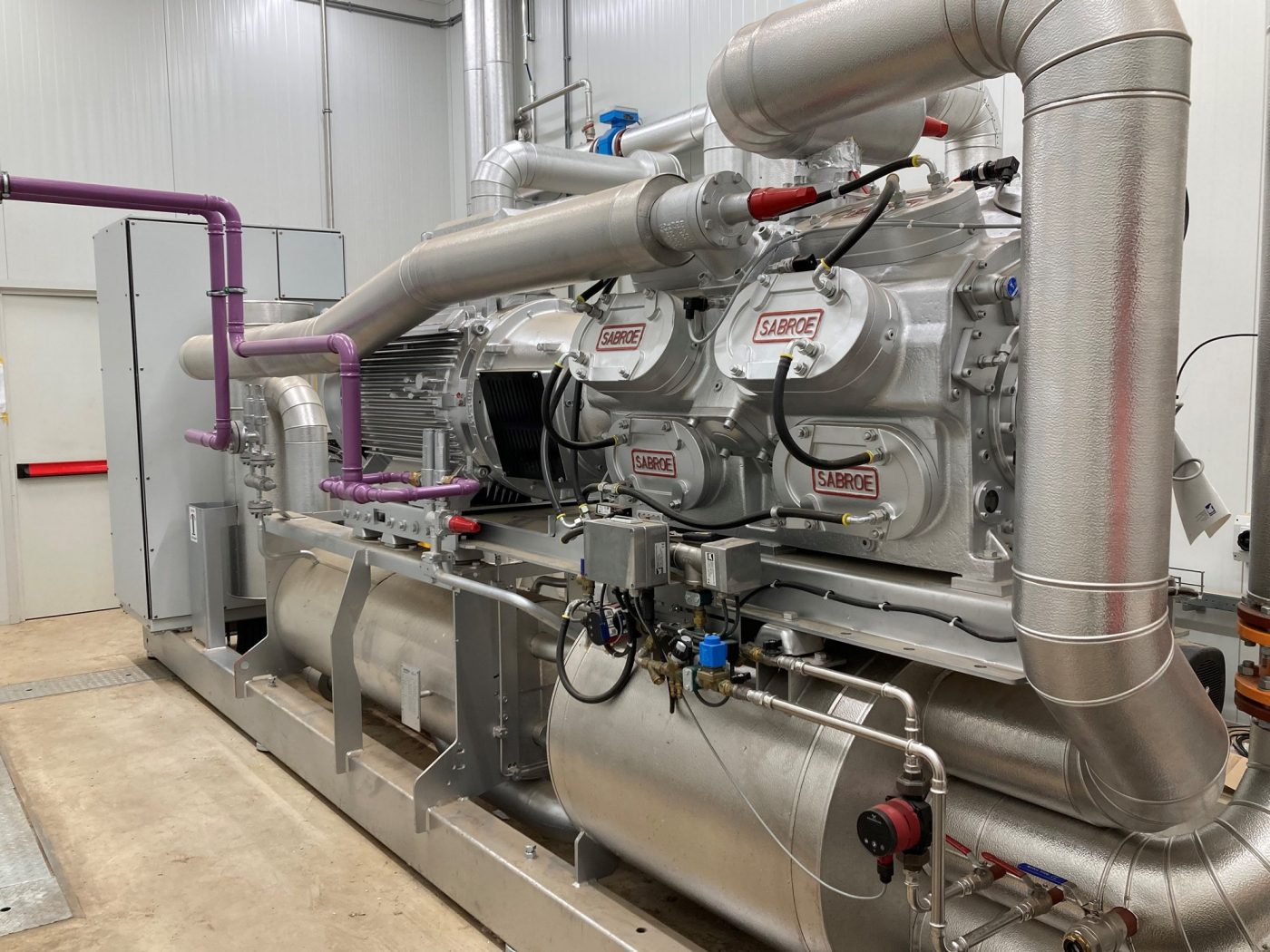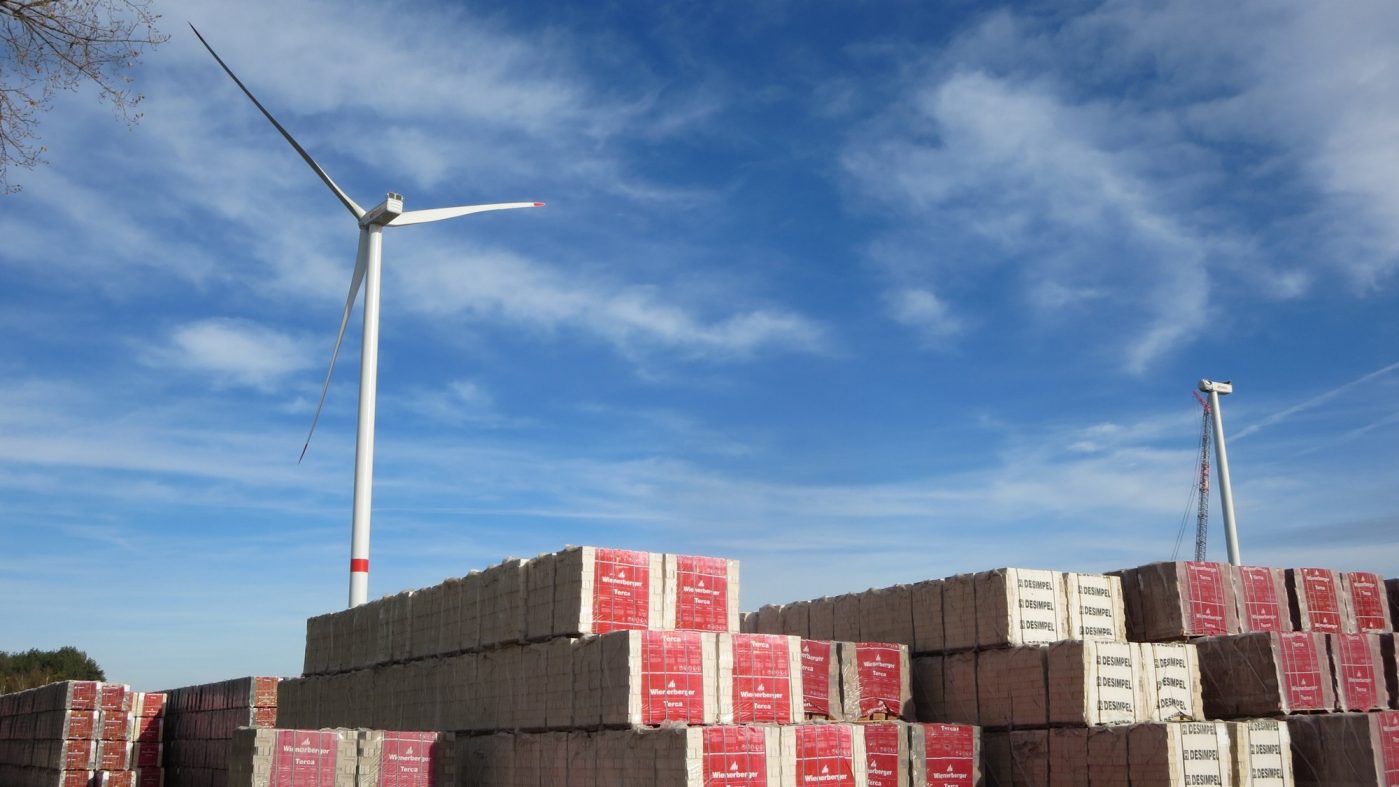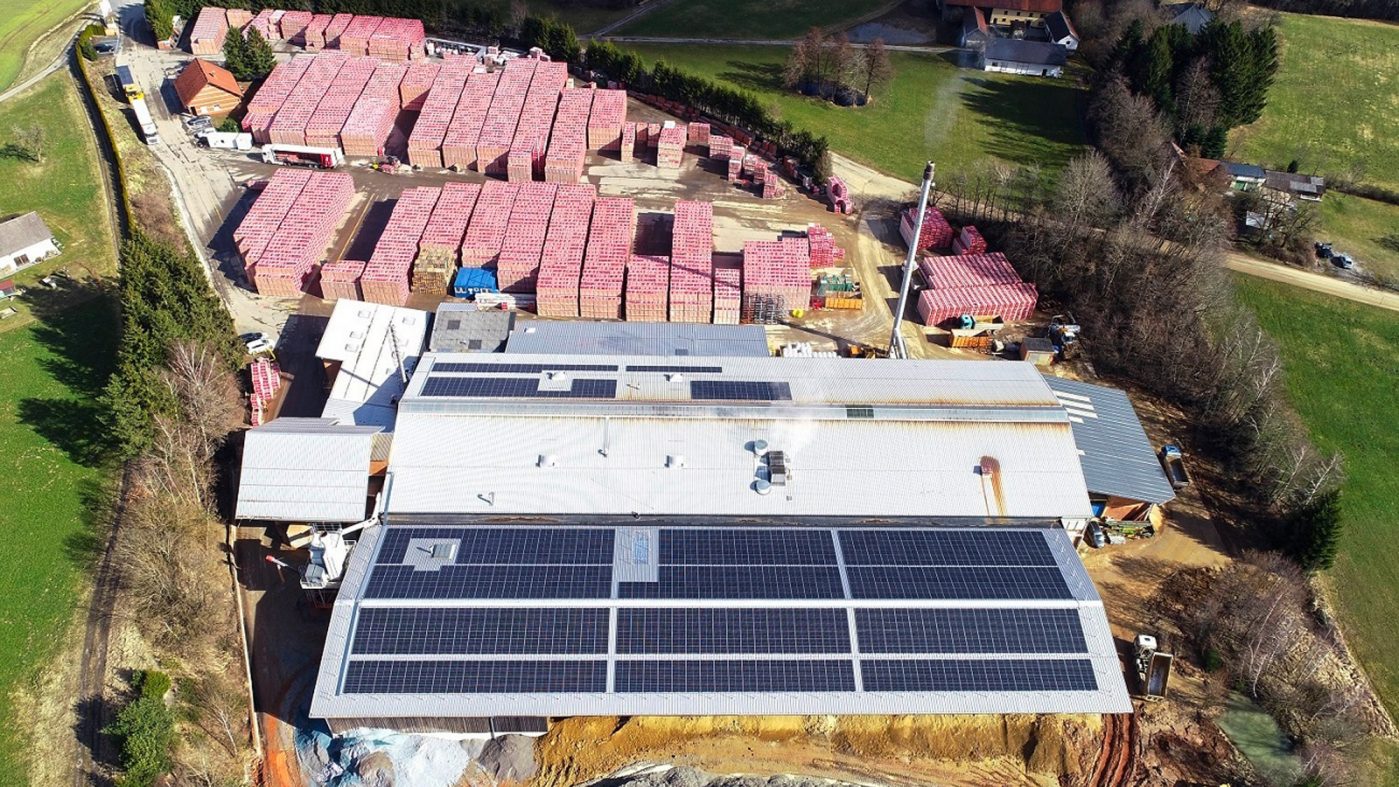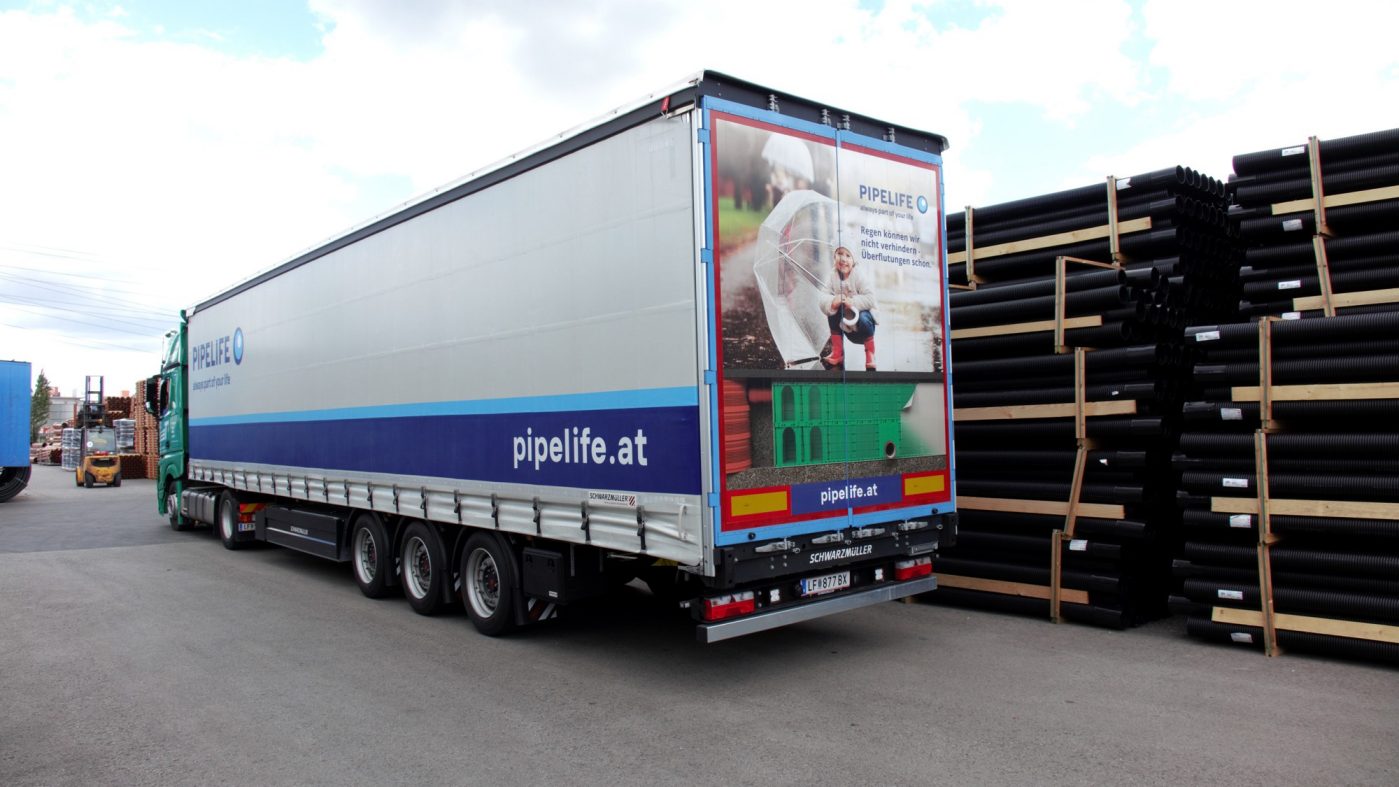 © Wienerberger
© Wienerberger
Production and Transport: Committed to the Energy Revolution
Industrial processes offer huge potential for decarbonization: how wienerberger is driving energy efficiency in production and transport.
 © Wienerberger
© Wienerberger
Industrial processes offer huge potential for decarbonization: how wienerberger is driving energy efficiency in production and transport.
From floods to heatwaves – the climate crisis is presenting Europe with new challenges. To tackle them, the European Union’s Green Deal has set out clear energy and climate targets to make Europe climate neutral by 2050. The manufacturing industry has a key role to play on the road to climate neutrality. According to data from the European Parliament industrial processes and product use account for more than 9 percent of emissions in the EU.
Ensuring universal access to reliable, clean and affordable energy is one of the 17 Sustainable Development Goals (SDGs) that the United Nations has set for 2030. To achieve it, the share of renewable energy in the global energy mix should be significantly increased and the improvement in energy efficiency doubled. More information can be found here: SDG 7
wienerberger is leading the charge to shape this sustainable development on the basis of the ambitious ESG (Environment, Social, Governance) targets defined in its Sustainability Program. This program sets out ecological measures covering the areas of decarbonization, the circular economy, and biodiversity. And it envisages reducing specific CO2 emissions by 15 percent by 2023 as compared to 2020. “Our long-term goal is to implement the European Green Deal. We want to make Wienerberger climate neutral by 2050 at the latest,” says Johannes Rath, Chief Technology Officer at Wienerberger Building Solutions. “This will be achieved through greater energy efficiency in production and transport, an innovative portfolio and new technologies.“
“Our long-term goal is to implement the European Green Deal. We want to make wienerberger climate neutral by 2050 at the latest. This will be achieved through greater energy efficiency in production and transport, an innovative portfolio and new technologies.“
One effective lever is production. The drying and firing of bricks is a highly energy-intensive process. However, wienerberger is continuously making it a more climate-friendly one – for example by using heat pumps to improve the energy efficiency of drying and with highly-efficient, innovative kiln technology based on green electricity. The latter is already in operation producing climate-neutral brick slips at the wienerberger plant in Kortemark, Belgium.
Then there is the Uttendorf project that is currently under implementation by Wienerberger Austria. “A high-efficiency kiln powered by green electricity will produce Porotherm bricks and slash the carbon footprint by 90 percent,” says Johannes Rath. But wienerberger is also taking action elsewhere. Take dematerialization for example. Less energy is needed to dry and fire brick innovations that have a lower mass, although there are no compromises when it comes to meeting all the relevant product requirements. This has big advantages for the climate, and also in terms of costs and transport. Read more here: Slim Bricks for Greater Climate Protection.

Bricks are dried with hot air in large drying chambers. Unfortunately, significant amounts of energy are lost when the exhaust air that is loaded with water vapor is discharged. One solution is to fit the dryer with a heat pump. This technology uses the heat contained in the exhaust air to produce steam which in turn is used to provide heat for the dryer. For this, wienerberger relies on powerful compression heat pumps powered by green electricity. This reduces the amount of energy consumed in the drying process by up to 80 percent.
 © Wienerberger
© Wienerberger
Generating our own electricity: wienerberger is building a wind power plant at its Beerse production site in Belgium. In future, the wind power will be used in brick production.
Industry embraced green energies a long time ago. wienerberger is focusing intensively on switching to low-emission energy sources for carbon-neutral production. “Depending on the location, we currently use green electricity that we have either purchased or generated ourselves from solar power, wind power, or biogas. In addition, we also have our sights on other promising sources of energy such as green synthesis gas or hydrogen,” says Johannes Rath. At present, renewable energies account for more than half the company’s electricity consumption.
The Wienerberger Piping Solutions Business Unit is also setting new standards. Since 2020, all the electricity used in the production of ceramic pipes has been green electricity. As electricity is also the main source of energy in the production of plastic pipes, Pipelife is accelerating the switch to renewable energy in this area too. The aim is to increase the amount of self-generated electricity – for example by installing photovoltaic systems on the roofs of the production plants. And at some sites, waste heat from cooling processes is also used to heat offices and other spaces.
 © Manfred Fesl
© Manfred Fesl
Solar energy pilot project in Uttendorf: Wienerberger Austria is implementing photovoltaic projects to generate power at six brick production sites.
To keep products in a closed recycling loop through all stages of their lifecycle: that is the principle behind the cradle to cradle® concept. Certified solutions guarantee a sustainable use of energy, material and vital resources such as water. This saves resources and protects the climate. Find out more about cradle to cradle® at Wienerberger Building Solutions: Urban Mining: Recycling Bricks for a Circular Economy.
Wienerberger Piping Solutions is also setting the course for tomorrow. Find out how Pipelife applies the cradle to cradle® principle: Plastic Recycling: The Circular Economy in Practice.
Production is not the only area where energy can be saved. wienerberger is also breaking new ground in its transport operations with the aim of keeping journeys as short as possible – for example from the clay pit to the production site. Furthermore, the company is exploring the feasibility of switching to clean drive technologies: in future, transport trucks could run on green fuels such as biodiesel or hydrogen. Climate-friendly alternatives are already being used at production sites - with electric forklifts gradually replacing diesel-powered models.
Pipelife relies on digital support for climate-friendly logistics. At multiple locations, a forward-looking transport management tool provides solutions for optimized route planning and for safer, more efficient loading and unloading. Precise data helps calculate how a maximum load can be transported most efficiently from A to B – eliminating unnecessary distances and emissions. In addition, the software provides a digital image that helps staff optimally position the goods in the loading space. The potential is immense: thanks to increased efficiency and transparency at the customer’s premises, Pipelife has been able to cut carbon emissions from transport by around 5 percent. Additional measures are in the starting blocks.
 © Pipelife
© Pipelife
Fewer carbon emissions: software tools are helping Pipelife shorten journeys and optimize loading.
Conclusion: Achieving the European energy and climate targets is the great challenge of our age. Energy efficiency and renewable energies have the potential to make industrial processes much more climate friendly. wienerberger is leading the climate action charge in plants around the globe.